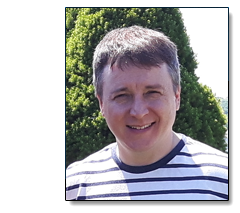Biography
I received my Ph.D. in Computer Science at
the University of Cambridge in 2004, my
M.Sc. from the University of British Columbia
in 2000 and my B.Sc. from Brock University
in 1998. I am currently a professor at Dalhousie University. Before arriving at Dalhousie, I worked
primarily on semi-automatic image editing, but I also dabbled in sound synthesis
and human motion editing. My current interests lie in the areas of non-photorealistic rendering, image editing, animation and visualization.
For fun, I like to draw, walk dogs and occasionally ski without style. Here's a few examples of
my drawings for the curious:
|
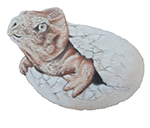 |
Research Projects
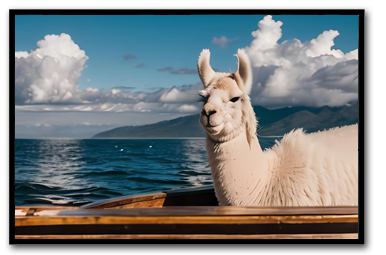
|
Ocean Science Visualization
Part of a Dal-led research program, titled Transforming Climate Action: Addressing the Missing Ocean,
is set to bring an ocean-first approach to climate science, innovation and solutions. It unites
more than 170 researchers across Dalhousie and its partner institutions Université du Québec à Rimouski,
Université Laval and Memorial University of Newfoundland. And with additional investment activated by this
CFREF grant bringing its total funding to nearly $400 million, it represents a monumental financial
contribution to Canada-led climate science.
Our interdisciplinary research program involves experts in education, ocean science, ocean literacy,
information science, computer science, and public administration, bringing a rich suite of theories
and methods to investigate this complex problem. |
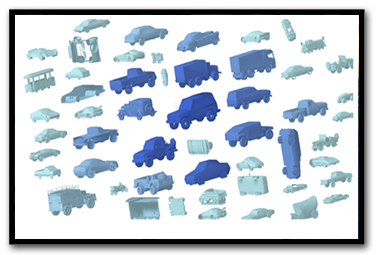
|
3D Clouds
Given the expanding use of 3D Objects in a variety of fields such as animation, gaming, virtual worlds, commerce, augmented reality
and 3D printing, we present a novel system for object browsing and searching. Specifically, the system packs objects into an interactive
3D cloud for browsing and searching. It was designed with the aim of increasing search efficiency in a variety of active environments,
while providing a visually engaging layout, and we evaluated this by conducting a comparative user study. We show that our system can
significantly decrease search times compared to the classic grid-based layout, and it has been suggested by subjects that cloud-based
searching is more interesting and visually-engaging. |
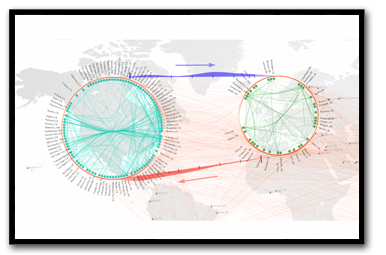
|
Dynamic Network for GIS
A dynamic approach for revealing the underlying information in locally cluttered areas within a geo-spatial connected
graph while maintaining global edge trends. Two time series data-flow visualization approaches at both local and global scales
are proposed respectively: a stream model focuses on data flows within the local area while a hub model addresses the relations
between groups of nodes across the graph. The computational complexity and quantitative performance analysis on three different
datasets were conducted to examine the scalability of the visualization model. The simulation results show that the central
algorithms in our approach are able to achieve acceptable performance in real world test cases. |
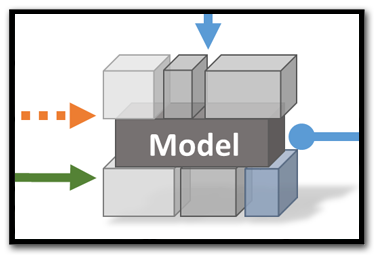
|
Interactive Text Analytics
User generated content is different from traditional documents in structure, length, and semantics. Consequently, applying
traditional natural language processing and text mining methods to emerging and challenging text mining problems does not
always achieve satisfactory results. This thesis studies the impact of actively involving the user in the analytical process of such data on overcoming
related challenges and improving the quality of the analysis. We investigate whether employing active learning and visualization
techniques increases the benefits gained from incorporating user knowledge, and whether these techniques enhance user involvement.
Moreover, our ultimate objective is to assist users to better understand the data and make decisions.
|
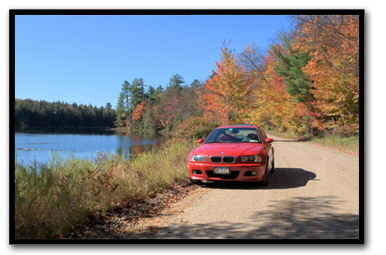
|
Perceptual Tone Mapping
High dynamic range (HDR) images provide the capacity to represent the luminance in real scenes with much higher precision than
standard image formats. With advances in hardware and computer graphics technologies, HDR images are rapidly becoming more
commonplace, and they have successfully been used for many applications, such as digital photography, physical-based rendering,
and virtual reality. But to visualize HDR images on contemporary display devices, the dynamic range needs to be adapted to the
much smaller range of the devices. This is accomplished through tone mapping, with the goal of reproducing the visual appearance
of HDR scenes based on human perception and automatic optimization. |
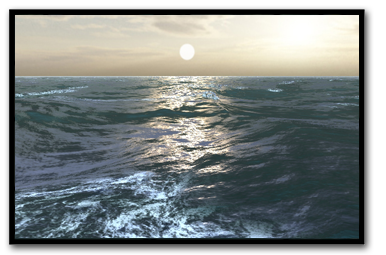
|
Real-time Ocean Modelling
Realistic simulations of the ocean surface based on statistical wave models typically rely on very large Fourier grids. Real-time requirements severely limit the size of the grids that can be used, even if the FFT is implemented on the GPU. Moreover, none of the grids used so far are sufficient for capturing the entire dynamic range of ocean waves, which can easily span four to five orders of magnitude.
Our approach removes the FFT as the computational bottleneck of sea surface simulations. By splitting the wave number range into a small number of non-overlapping, relatively narrow bands within which the samples are equidistantly spaced allows making use of the FFT while having some of the flexibility of the adaptive approaches that concentrate wave number samples in high-energy regions of the spectrum. |

|
Real-time River Rendering
In this work we present a new method for the realistic real-time simulation of rivers. Our solution includes a 2D fluid solver that simulates the flow of a river's surface, an efficient method for adaptively computing 3D flow information and an animated 3D procedural wave texture that is advected through the fluid via advection particles in order to mimic the highly detailed fluid surfaces that are characteristic of rivers. Our technique that couples animated texture advection with a pseudo-3D fluid simulation produces stable results that are representative of large scale real-world rivers and suitable for use in real-time applications. Our system surpasses prior work on real-time river rendering both with regards to efficiency and visual quality, which we establish through the rendering of rivers tens of kilometers long. |
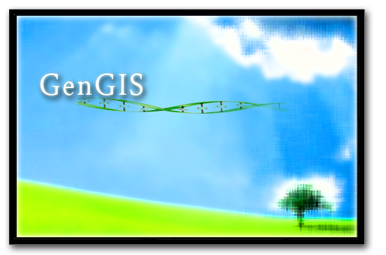
|
Genomic Geospatial Information Systems
With the advent of ever-cheaper genome sequencing technologies, a wide range of organisms can now be examined at
the genetic level, and biodiversity can be expressed in quantitative terms of genetic similarity and shared
function. These techniques are now being applied to samples
collected directly from the environment to give a cross-section of the diversity that exists at different
locations in different habitats. We are developing an open source, 3D geospatial information
system to
examine and test relationships between biodiversity, geography, and the environment. The goal
is to acquire cartographic and environmental data from many sources, and overlay user-provided genomic
sample sites and genetic sequences. |
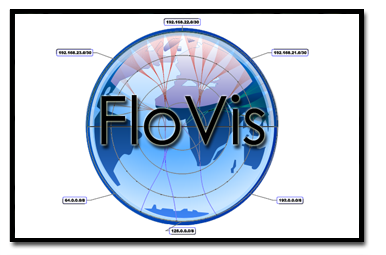
|
Network Flow Visualization
NetFlow data is being accumulated from the borders between private networks and the public internet.
The data aggregate grows at the rate of gigabytes
per day, stored in SiLK repositories. While tools exist to look for known malicious activities
such as scanning, the volume of the data, its volatility, and the difficulty of establishing its
“ground truth” preclude the use of conventional anomaly detection approaches for detecting
malicious activity. To aid analysts in understanding this data, we are developing a comprehensive
and extensible set of visualization tools, integrated with the SiLK tool suite via a relational
database that stores data such as sets and multisets (“bags”), derived from NetFlow and similar
sources. |
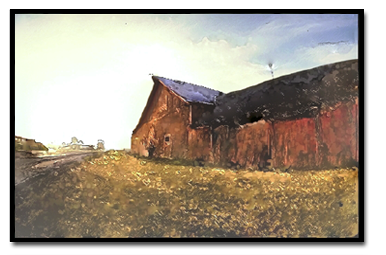
|
Mixed Media Painting and Portraiture
This work presents a technique to transform digital
images into renderings that approximate the appearance of mixed media artwork, which incorporates
two or more traditional visual media. This is achieved this by first separating an input image into distinct regions based on the
detail present in the image. Each region is then processed independently with a user-selected NPR filter.
This allows the user to treat highly detailed regions differently from regions of low frequency content. The separately processed
regions are then blended in the gradient domain. In addition, the work is extended to the rendering of mixed media portraits.
Portraits pose unique challenges that we address with our method of segmentation, which is based on a composite of face detection
and image detail. Our approach offers the user a great deal of flexibility over the end result, while at the same time requiring very
little input. |
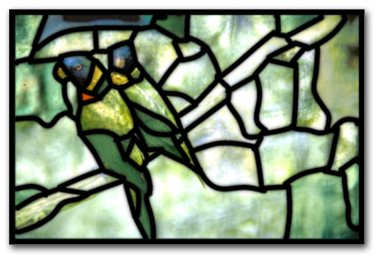
|
Image-Based Stained Glass
A stained glass window possesses a distinctive style partly due to the unique color ranges produced through the interaction of color enamels, glass
and light. The imposition of lead calmes further separates the appearance of stained glass from other mediums.
This project presents a method of re-styling an image so that it approximates the appearance of a work of stained glass.
To this end, a novel approach has been developed which involves image warping, segmentation, querying, and colorization along with texture synthesis.
In the method, a given input image is first segmented. Each segment is subsequently transformed to match real segments of stained glass queried from a
database of image exemplars. By using real sources of stained glass, the method produces high quality results in this nascent area of
non-photorealistic rendering. The generation of the stained glass requires only modest amounts of user interaction. This interaction is
facilitated with a unique region-merging tool.
|
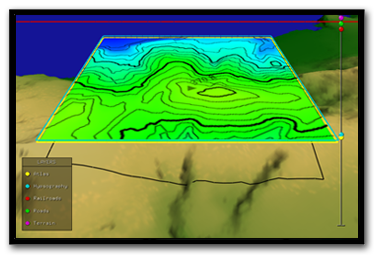
|
Hybrid 2D-3D Geospatial Information Systems
In many interactive computer graphics applications, maps in three dimensions are central to enabling the exploration, presentation and
manipulation of geographical data. Advanced graphical libraries such as OpenGL enable efficient modelling and rendering of the third geographical
dimension.
In this project we are developing a unique Geographical Information System (GIS) that seamlessly integrates 2D and 3D views of the same spatial and aspatial data.
Multiple layers of information are continuously transformed between the 2D and 3D modes under the control of the user, directly over a base-terrain.
Although many existing commercial 3D GIS systems have 2D views they are typically isolated from the 3D view
in that they are presented in a separate window. In this project we introduce a 2D/3D hybrid GIS that allows the user to view the 2D data in direct
relation to the 3D view within the same view.
|
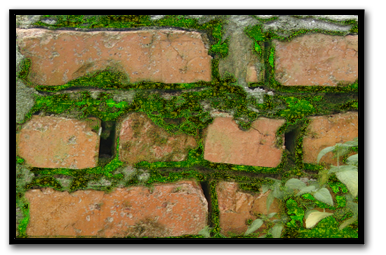
|
Replicated Image Editing
Image editing software is often characterized by a seemingly endless array of toolbars, filters, transformations and layers.
But recently, a counter trend has emerged in the field of image editing which aims to reduce the user’s workload through semi-automation.
This alternate style of interaction has been made possible through advances in directed texture synthesis and computer vision.
It is in this context that we have developed our texture editing system that allows complex operations to be performed on images with minimal
user interaction. This is achieved by utilizing the inherent self-similarity of image textures to replicate intended manipulations globally.
Our image editing approach includes operations for replicated painting, cloning and warping.
|
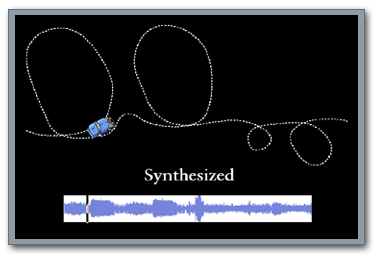
|
Sound Synthesis
The automatic generation of audio has been explored both as artifact in itself and for the accompaniment of existing animations.
The most recent work automatically generates soundtracks for input animation based on existing animation soundtrack.
This technique can greatly simplify the production of soundtracks in computer animation and video by re-targeting existing soundtracks.
A segment of source audio is used to train a statistical model which is then used to generate variants of the original audio to fit
particular constraints. These constraints can either be specified explicitly by the user in the form of large-scale properties of the
sound texture, or determined automatically and semi-automatically by matching similar motion events in a source animation to those
in the target animation.
Earlier work explored connections between music and mathematics. MWSCCS is a concurrent stochastic process algebra for musical modeling
and generative composition. This allows the creation music directly from mathematical processes.
|
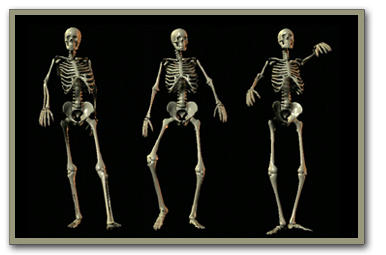
|
Motion Editing
Two research projects have been undertaken in the area of motion editing. The first is a framework for synchronising motion curves to music in
computer animation. Motions are locally modified using perceptual cues extracted from the music. The key to this approach is the
use of standard music analysis techniques on complementary MIDI and audio representations of the same soundtrack.
The second project allows the replicated editing of human movement contained in a motion capture sequence or database of sequences. To this end,
we rapidly retrieve perceptually similar occurrences of a particular motion in a long motion capture sequence or unstructured motion
capture database. The user is then able to replicate editing operations with minimal input: one or more editing operations on a given
motion are made to affect all similar matching motions.
New video added!
|
Students, Researchers & Research Topics
Topics for Students Looking for a Supervisor
I am always keen on talking with new students. If you are interested in doing a thesis (PhD, Master's or Honor's) or a directed studies in the areas of computer graphics,
animation or visualization then feel free to drop by or send me an email to discuss it. I have a number of projects on the go
and would be interested in supervising students with some level of experience with animation, graphics, image processing or visualization
(i.e. having taken a course in any of these topics would be fine).
Research Assistants, PostDocs & Visitors
Current Students
Colin Orian, PhD Thesis.
Topic: Ocean Visualization
Ben Lee, MCS Thesis.
Topic: Computer Graphics
Zainuddin Saiyed, MACS Thesis.
Topic: LLMs for Ocean Science
Gowri Kanagaraj, MACS Thesis.
Topic: Ocean Visualization
Past Students
Kamal Kumar, MCS Thesis.
Topic: Visual Analysis of Oceanic Multivariate Species Time-Series Data
Chengyao Xiao, MCS Thesis.
Topic: Optical Flow Estimation with Post Refinement
Pedram Safari, Mitacs.
Topic: VR Game Development
Rashidul Islam, MCS Thesis.
Topic: Visualizing Uncertainty with Chromatic Aberration
Ruiqi Li, NSERC USRA.
Topic: Graphics for Digital Games
Liam Hebert, Honors Thesis.
Topic: Twitter Recommender Visualization
Randy Herritt, MCS Thesis.
Topic: Augmented Reality for Marine Navigation in Coastal Waters
Omobola Okesanjoo, MCS Thesis.
Topic: Visualizing Object Clouds Through Energy Minimization
Siwei Zhao, MCS Thesis.
Topic: Tone Mapping Optimization
Yanyue Meng, Honors Thesis & Directed Studies.
Topic: Natural Phenomenon Modelling
Chengyao Xiao, NSERC USRA.
Topic: Machine Learning for 3D Models
Mohammad Salimian, PhD Thesis.
Topic: Virtual Presence.
Ali Hashemi, MACS Thesis.
Topic: Aesthetic Routes: Path finding based on visual aesthetics.
Johna Latouf, Honors Thesis.
Topic: 3D Objects Design in Virtual Reality
Rui Xu, Honors Thesis.
Topic: Augmented Reality Pojections
Zhao Shan, Research Assistant.
Topic: High Dynamic Range Imaging.
Raheleh Makki, Postdoc.
Topic: Visual Analytics.
Kevin Gao, PhD Thesis.
Topic: Objective Quality Assessment Based Tone Mapping Optimization.
Johna Latouf, Directed Studies.
Topic: Building 3D Objects in Virtual Reality
Hankun Zhang, Directed Studies.
Topic: Hand-Object Interaction Optimized for VR
Rui Xu, Directed Studies.
Topic: Augmented Reality Driving Simulation
Cecilia Hong, MCS Thesis.
Topic: Mobile 3D Graphics.
Raheleh Makki, PhD Thesis.
Topic: Visual Text Analytics.
Alex Zou, MCS Thesis.
Topic: Geo-Spatial Network Visualizations.
Axel Soto, Postdoc.
Topic: Visual analytics for business data.
Zezi Ai, MCS Thesis.
Topic: Mobile Graphics.
Julia Weber, CALDO Undergraduate Internship.
Topic: Virtual Presence.
Herbenio Junior, CALDO Undergraduate Internship.
Topic: Virtual presence.
Ryan MacLeod, NSERC USRA.
Topic: Visual Querying.
Jake Seigel, part-time reseacher.
Topic: Automated Analysis of User Study Video.
Mohammad Salimian, MCS Thesis.
Topic: Geographic Visualization.
Jake Seigel, MCS Thesis.
Topic: Video Data Exploration for Film Production and User Study Analysis.
Matthew MacDonald, full-time reseacher.
Topic: Visualization of Network Data.
Maswood Mostafi, MCS Thesis.
Topic: Visualizing Geospatial Uncertainty in Marine Animal Tracks.
Chris Smith, full-time reseacher.
Topic: Visualization Text Data.
Teryl Taylor, full-time reseacher.
Topic: Visualization of Network Data.
Christopher Smith, MCS Thesis.
Topic: Databurst: Interactive Analysis of Hierarchical Data Using Radial Space-Filling Diagrams.
Rafael Falcon-Lins, Part-time MCS Thesis.
Topic: Feature-Based Mesh Simplification with Quadric Error Metric Using A Line Simplification Algorithm.
Sandy Chapman, Honors Thesis.
Topic: Simulating Wetland Ecosystems Through Grammar Based Plant Creation, Tool Assisted Terrain Design And Dynamic Distribution of Plant Species.
Jessie Xin Zhang, PhD Thesis.
Topic: Audio Segmentation, Classification and Visualization.
Stephen Chisholm, MCS Thesis.
Topic: Tone Mapping By Interactive Evolution.
Teryl Taylor, MCS Thesis.
Topic: FloVis: A Network Security Visualization Framework.
Andrew Shouldice, Honors Thesis.
Topic: Real-time Ocean Surface Simulation.
Tim Burrell, MCS Thesis.
Topic: Advected River Textures.
Andrew Shouldice, NSERC USRA, Summer 2008.
Topic: Physical Simulation of Ocean Water.
Graham LeBlanc, NSERC USRA, Summer 2008.
Topic: Physical Simulation of Ocean Water.
Devin Horsman, NSERC USRA, Summer 2008.
Topic: Mesh Simplification.
Jacqueline L. Whalley, visiting researcher on sabbatical for 6 months, 2008. From Auckland University of Technology.
Topic: Geospatial Information Systems.
Suwen Wang, full-time research assistant, 2007-2008. Dalhousie University.
Topic: Geospatial Information Systems.
Harman Clair, full-time research assistant, 2007-2008. Dalhousie University.
Topic: Geospatial Information Systems.
Mark Dennis, Honors Thesis, 2008.
Topic: Tabletop Display Magnets.
Marcelo Ruetalo, MACS Thesis, 2007.
Topic: Physical Simulation of Ocean Water.
Michael Welsman-Dinelle, Honors Thesis, 2007.
Topic: Interactive Gradient Domain Texture Blending.
Suwen Wang, Honors Thesis, 2007.
Topic: Collapsable 3D GIS Visualization.
Steven Avery, Directed Studies, 2006.
Topic: A Viewer and Podcaster for Digital Artwork.
Andrew Pahuru, Joint Final Year Project, 2005.
Topic: 3D Teamlink Groupware.
David Shorter, Joint Final Year Project, 2005.
Topic: 3D Teamlink Groupware.
George Harker, Honors Thesis, 2003.
Topic: Efficient and Believable Tree Motion.
Jason Thomson, Honors Thesis, 2003.
Topic: 3D Accelerated User Interfaces.
Karen Inglis, Honors Thesis, 2002.
Topic: Computer Generated Cartograms.
David Stimpson, Honors Thesis, 2002.
Topic: Graphically Simulated Generation of Plant Life.
Publications
Book Chapters
Teryl Taylor, Stephen Brooks and John McHugh. NetBytes Viewer: An Entity-based Netflow Visualization Utility for
Identifying Intrusive Behavior. In Goodall et al. (eds.),
Mathematics and Visualization (Proceedings of VizSEC), Springer-Verlag, August, 2008
(PDF).
Journals
Vegu Shree Rama Kamal Kumar and Stephen Brooks. Visual Analysis of Oceanic Data for Marine Ecosystems. Ecological Informatics, volume 82, September, 2024.
(PDF)
Rashidul Islam and Stephen Brooks. Visualizing Uncertainty with Simulated Chromatic Aberration. Journal of Perceptual Imaging,volume 7, pp. 1-16, 2024.
Xiaoting Hong and Stephen Brooks. 3D Objects Clouds: Viewing Virtual Objects in Interactive Clouds. In IEEE Transactions on Visualization and Computer Graphics, volume 26, number 3, pp. 1442-1453, March, 2020.
(PDF)
Lingbo Zou and Stephen Brooks. A Dynamic Approach for Visualizing Local and Global Information in Geo-Spatial Network Visualizations. GeoInformatica. 23(4), 733-757, 23, pages 733–757 (2019).
(PDF)
Raheleh Makki, Eder Carvalho, Axel J. Soto, Stephen Brooks, Maria Cristina Ferreira De Oliveira, Evangelos Milios, and Rosane Minghim. ATR-Vis: Visual and Interactive Information Retrieval for Parliamentary Discussions in Twitter. ACM Transactions on Knowledge Discovery from Data, 12, 1, Article 3 (February 2018), 33 pages.
(PDF)
Kevin Gao, Stephen Brooks and Dirk Arnold. A Feature-based Quality Metric for Tone Mapped Images. ACM Transactions on Applied Perception, Volume 14 Issue 4, September 2017.
(PDF)
Kevin Gao, Stephen Brooks and Dirk V. Arnold. Automated parameter tuning for tone mapping using visual saliency. Computer & Graphics, volume 52, pp. 171–180, November 2015.
(PDF)
Graham LeBlanc, Andrew Shouldice, Dirk V. Arnold and Stephen Brooks. Multi-band Fourier synthesis of ocean waves. Journal of Graphics Tools, volume 16, issue 2, pp. 57-70, 2012.
(PDF)
Anwar Alhenshiri, Stephen Brooks, Michael Shepherd and Carolyn Watters. Augmenting the Perception of Web Search Results. Journal of Information Studies, volume 3, issue 1, pp. 18-30, January, 2011.
Donovan H. Parks, Michael Porter, Sylvia Churcher, Suwen Wang, Christian Blouin, Jacqueline Whalley, Stephen Brooks, and Robert G. Beiko. GenGIS: A Geospatial Information System for Genomic Data. Genome Research. 19(10):1896-904, July, 2009.
(PDF)
Tim Burrell, Dirk Arnold and Stephen Brooks. Advected River Textures. Computer Animation and Virtual Worlds, volume 20, issue 2-3, pp. 163-173, June, 2009.
(PDF)
Jacqueline Whalley, Stephen Brooks and Robert G. Beiko. Radié: Visualizing Taxon Properties and Parsimonious Mappings Using a Radial Phylogenetic Tree. Bioinformatics, volume 25, number 5, pp.672-673, March, 2009.
(PDF)
Stephen Brooks and Jacqueline L. Whalley. Multilayer Hybrid Visualizations to Support 3D GIS. In
Computers, Environment and Urban Systems, volume 32, number 4, pp. 278-292, July, 2008.
(PDF)
Stephen Brooks. Mixed Media Painting and Portraiture. In IEEE Transactions on Visualization and Computer Graphics,
volume 13, number 5, pp. 1041-1054, September/October, 2007.
This paper is the Featured Article of the edition.
(PDF)
Stephen Brooks. Image-Based Stained Glass. In IEEE Transactions on Visualization
and Computer Graphics, vol. 12, no. 6, pp. 1547-1558, November/December, 2006.
(PDF)
Stephen Brooks and Neil A. Dodgson. Self-Similarity Based Texture
Editing. ACM Transactions on Graphics (Proceedings of ACM SIGGRAPH
2002), 21(3), pp. 653-656, July 2002. Featured in the Siggraph Promotional Video.
(PDF)
Stephen Brooks and Brian J Ross. Automated Composition from Computer
Models of Biological Behavior. Leonardo Music Journal, Volume 6,
pp. 27-31, 1996.
Conferences
Colin Orian, P. Riddle, Geoff Krause, Levy Zhang, Philippe Mongeon and Stephen Brooks. Towards Visualizing Oceanographic Works Across Canada. To appear in the 25th International Society for Photogrammetry and Remote Sensing Congress, Toronto, July 2026.
Ben Lee and Stephen Brooks. Adaptive Meshes with Encoded Services. To appear in the 21st International Conference on Computer Graphics,
Interaction and Visualization Theory and Applications, Spain, March 2026.
Ben Lee and Stephen Brooks. Encoding Functionality Directly into Polygonal Models. To appear in the 21st International Conference on Computer Graphics,
Interaction and Visualization Theory and Applications, Spain, March 2026.
Zain Saiyed, Colin Orian, Poppy Riddle , Gowri Kanagaraj, Geoff Krause , Remi Toupin , Philippe Mongeon and Stephen Brooks. RAG Based Navigation of the
World Ocean Assessment II. NLP4Sustain Workshop, Hildesheim, Germany, September 2025.
Colin Orian, Zain Saiyed, Gowri Kanagaraj, Poppy Riddle, Geoff Krause, Remi Toupin, Philippe Mongeon and Stephen Brooks. Ocean Science Visualization Via the
World Ocean Assessment. 29th International Conference Information Visualization, Darmstadt, Germany, August 2025.
Rashidul Islam and Stephen Brooks. Visualizing Uncertainty with Chromatic Aberration. Color and Imaging Conference 32, October 2024. Montreal. (selected for associated journal publication)
Randy Herritt and Stephen Brooks. Augmented Reality in Coastal Water Navigation. Visualization and Data Analysis, p.1-12, January, 2022.
Okesanjo Omobola and Stephen Brooks. Semantic Object Clouds. Visualization and Data Analysis, p.1-12, January, 2022.
Mohamad H. Salimian, Derek F. Reilly, Stephen Brooks. MP Remix: Relaxed WYSIWIS Immersive Interfaces for Mixed Presence Collaboration With 3D Content. In Proceedings of Computer Supported Cooperative Work, 105:1-105:22, November, 2019.
Mohamad H. Salimian, Derek F. Reilly, Stephen Brooks. IMRCE: A Unity Toolkit for Immersive Mixed Presence. ACM Spatial User Interaction, ACM, New York, NY, USA, 48-59, 2018.
(PDF)
A.J. Soto, C. Ryan, F. Peña Silva, T. Das, J. Wołkowicz, E. Milios, S. Brooks. Data Quality Challenges in Twitter Content Analysis for Informing Policy Making in Health Care. System Sciences, 760-769. January 2-6, 2018, Waikoloa, USA.
(PDF)
Kevin Gao, Jeremy Porter, Stephen Brooks and Dirk V. Arnold. Evolutionary Optimization of Tone Mapped Image Quality Index. EA 2017: Artificial Evolution, pp 176-188, 2017.
(PDF)
Kevin Gao, Stephen Brooks and Dirk Arnold. A Feature-based Quality Metric for Tone Mapped Images. ACM Symposium on Applied Perception, Cottbus, Germany, September, 2017.
Mohamad H. Salimian, Derek F. Reilly, Stephen Brooks and Bonnie MacKay. Physical-Digital Privacy Interfaces for Mixed Reality Collaboration: An Exploratory Study. ACM International Conference on Interactive Surfaces and Spaces, pp. 261-270, Niagara Falls, Ontario, 2016.
(PDF)
Raheleh Makki, Axel J. Soto, Stephen Brooks and Evangelos E. Milios. Twitter Message Recommendation Based on User Interest Profiles. IEEE/ACM International Conference on Advances in Social Networks Analysis and Mining, 18-21, Calgary, Alberta, 2016.
(PDF)
Kevin Gao, Stephen Brooks and Dirk Arnold. Automatic Blended Tone Mapping through Evolutionary Optimization. IEEE Computational Intelligence, pp. 3855-3862, Vancouver, 2016.
(PDF)
Zezi Ai, Kirstie Hawkey and Stephen Brooks. Scale-based Exploded View: Evaluating Object Selection Methods on Mobile Devices. ACM HotMobile, pp. 27-32, St. Augustine, February, 2016.
(PDF)
Raheleh Makki, Axel J. Soto, Stephen Brooks and Evangelos E. Milios. Active Information Retrieval for Linking Twitter Posts with Political Debates. 14th IEEE Conference on Machine Learning and Applications, pp. 238-245, Miami, December, 2015.
(PDF)
Kevin Gao, Dirk Arnold and Stephen Brooks. Saliency-based Parameter Tuning for Tone Mapping. To appear in the 11th European Conference for Visual Media Production, pp. 33-41, London, November, 2014.
Mohamad Salimian, Derek Reilly, Stephen Brooks and Bonnie Mackay. Bridging physical and virtual privacy mechanisms during mixed-presence collaboration: implications for inconspicuous privacy. ACM SIGCHI Workshop on Inconspicuous Interaction , pp. 5-9, Toronto, April, 2014.
Raheleh Makki, Evangelos E. Milios, and Stephen Brooks. Context-Specific Sentiment Lexicon Expansion via Minimal User Interaction. Information Visualization Theory and Applications, pp. 178-186, Lisbon, Portugal, 2014.
(PDF)
Kevin Gao, Dirk Arnold and Stephen Brooks. Virtual Photograph based Saliency Analysis on High Dynamic Range Images. ACM Conference on Computational Aesthetics, pp. 87-92, Anaheim, California, July, 2013.
(PDF)
Mohammad Salimian, Derek Reilly and Stephen Brooks. Geo-Collages: Visualizing News over Geographical Maps. ACM SIGSPATIAL Workshop on GeoStreaming, pp. 58-65, Orlando, Florida, November, 2013.
(PDF)
Jake Seigel, Kirstie Hawkey and Stephen Brooks. Interview Explorer: A Lightweight Approach to Locating Interview Responses in Raw Data. Multimedia and Human Computer Interaction, pp. 185-192, Toronto, Canada, July, 2013.
Mohammad Salimian, Derek Reilly and Stephen Brooks. Examining the impact of regional familiarity and design characteristics on use of a map-based news visualization. ACM SIGSPATIAL Workshop on Map Interaction, pp. 24-29, Orlando, Florida, November, 2013.
(PDF)
Matt MacDonald, Carrie Gates, Teryl Taylor, Diana Paterson and Stephen Brooks. Stability Visualizations as a Low-Complexity Descriptor of Network Host Behaviour. Ambient and Mobile Systems, pp. 84-91, Halifax, Canada, June, 2013.
Derek Reilly, Mohammad Salimian, and Stephen Brooks. Document-Centric Mixed Reality and Informal Communication in a Brazilian Neurological Institution. ACM Conference on Computer Supported Cooperative Work and Social Computing (Workshop on Informal Communication in Health Practices), pp. 45-49, February, San Antonio, 2013.
Jake Seigel, Sam Fisher, Stephen Brooks. Towards a Unified System for Digital Film Production. To appear in Proceedings of the 10th International Conference on Entertainment Computing, pp 149-154 Vancouver, Canada, October, 2011.
(PDF)
Joel Glanfield, Diana Paterson, Christopher Smith, Teryl Taylor, Stephen Brooks, Carrie Gates, and John McHugh. FloVis: Leveraging Visualization to Protect Sensitive Network Infrastructure. NATO Information Systems Technology Panel Symposium on Information Assurance and Cyber Defense. Tallinn, Estonia. November 22-23, 2010.
Anwar Alhenshiri, Stephen Brooks, and Carolyn Watters. Augmenting the Perception of Web Search Results. International Conference on Digital Information Management (ICDIM 2010), Thunder Bay, Canada, July, 2010.
Joel Glanfield, Diana Paterson, Christopher Smith, Teryl Taylor, Stephen Brooks, Carrie Gates, and John McHugh. FloVis: Leveraging Visualization to Protect Sensitive Network Infrastructure. To appear at the Symposium on Information Assurance and Cyber Defence, Turkey, April 26, 2010.
(PDF)
Joel Glanfield, Stephen Brooks, Teryl Taylor, Diana Paterson, Christopher Smith, Carrie Gates, and John McHugh. OverFlow: An Overview Visualization for Network Analysis. To appear in Proceedings of VizSec 2009, Atlantic City, New Jersey, October, 2009.
(PDF)
Jacek Wolkowicz, Stephen Brooks and Vlado Keselj. Midivis: Visualizing music structure via similarity matrices. To appear Proceedings of the International Computer Music Conference (ICMC 2009), Montreal, Quebec, August, 2009.
(PDF)
Stephen Brooks. Movie Posters from Video by Example. Computational Aesthetics 2009, Victoria, British Columbia, May, 2009.
Jessie Zhang, Jacqueline L. Whalley and Stephen Brooks. A Two-Phase Method for Audio Segmentation. To appear at ICME 2009, New York, June, 2009.
(PDF)
Jessie Zhang, Stephen Brooks and Jacqueline L. Whalley. Adaptive Audio Classification Based on Adaptive Partitioning. To appear at ICME 2009, New York, June, 2009.
(PDF)
Stephen Chisholm, Dirk Arnold and Stephen Brooks. Tone Mapping by Interactive Evolution. Proceedings of GECCO 2009, Montreal, Canada, pp. 515-522, July, 2009.
(PDF)
Teryl Taylor, Diana Paterson, Joel Glanfield, Carrie Gates, Stephen Brooks, and John McHugh. FloVis: Flow Visualization System. Proceedings of CATCH 2009, Washington, DC., pp.186-198, March, 2009.
(PDF)
Adetokunbo Makanju, Stephen Brooks, Nur Zincir-Heywood and Evangelos Milios. LogView: Visualizing Event Log Clusters. Proceedings of Privacy, Security and Trust 2008, Fredericton, New Brunswick, pp. 99-108, October, 2008.
(PDF)
Robert G. Beiko, Jacqueline Whalley, Suwen Wang, Harman Clair, Greg Smolyn, Sylvia Churcher, Mike Porter, Christian Blouin, and Stephen Brooks. Spatial Analysis and Visualization of Genetic Biodiversity. Proceedings of Free and Open Source Software for Geospatial 2008, Cape Town, South Africa, pp. 316-324, September, 2008.
(PDF)
Jessie Zhang, Jacqueline L. Whalley and Stephen Brooks. Time Mosaics - An Image Processing Approach to Audio Visualization.
The 11th International Conference on Digital Audio Effects, Espoo, Finland, pp. 273-280, September, 2008.
Suwen Wang and Stephen Brooks. A 3D Scrapbook Approach to Geospatial Analysis.
The 12th Annual Geographical Information Science Research Conference, Manchester, pp. 200-205, April, 2008
(PDF).
Suwen Wang, Robert Beiko and Stephen Brooks. Collapsible 3D Terrains for GIS Visualization.
Proceedings of Geocomputation 2007, UK, Maynooth, September, 2007
(PDF).
Stephen Brooks and Jacqueline L. Whalley. Towards a Comprehensive Multi-layer Hybrid Display of GIS Data.
In Proceedings of the 11th Annual Geographical Information Science Research Conference, UK, Maynooth, pp. 215-219, April 2007.
Stephen Brooks. Synthesis and Modification of Remotely Sensed Imagery.
In Proceedings of the 11th Annual Geographical Information Science Research Conference, UK, Maynooth, pp. 178-182, April 2007.
Stephen Brooks and Jacqueline L. Whalley. Visualizing Collapsible 3D Data in a Hybrid GIS.
In Proceedings of Computer Graphics Theory and Applications ‘07, Barcelona, pp. 171-178, March, 2007.
Stephen Brooks, Ian Saunders and Neil A. Dodgson. Image Compression Using Sparse Colour Sampling Combined with Non-linear Image Processing.
In Proceedings of the 19th Symposium on Electronic Imaging, San Jose, pp. 1-12, January 2007
(PDF).
Stephen Brooks and Neil A. Dodgson. Integrating Procedural Textures with Replicated Image Editing.
In Proceedings of ACM GRAPHITE, Dunedin, pp. 277-280,
December 2005 (PDF).
Stephen Brooks and Jacqueline L. Whalley. A 2D/3D Hybrid Geographical Information System.
In Proceedings of ACM GRAPHITE, Dunedin, pp. 323-330,
December 2005 (PDF).
Stephen Brooks, Marc Cardle and Neil A. Dodgson. Enhanced Texture
Editing using Self-Similarity. In Proceedings of Vision, Video and Graphics, Bath,
July 2003 (PDF).
Marc Cardle, Stephen Brooks, Ziv Bar-Joseph and Peter Robinson.
Sound-by-Numbers: Motion-Driven Sound Synthesis. In Proceedings of the ACM SIGGRAPH Symposium
on Computer Animation, San Diego, July 2003
(PDF).
Marc Cardle, Stephen Brooks and Peter Robinson. Audio and User Directed
Sound Synthesis. In Proceedings of the International Computer Music Conference (ICMC 2003),
Singapore, October 2003 (PDF).
Marc Cardle, Stephen Brooks and Peter Robinson. Directed Sound Synthesis with Natural Grains.
In Proceedings of the Cambridge Music Processing Colloquium 2003 (CMPC 2003), Cambridge, March 2003.
Marc Cardle, Loic Barthe, Stephen Brooks and Peter Robinson. Motion Transformations Guided by Music Analysis. In Proceedings of Eurographics UK 2002,
Leicester, June 2002 (PDF).
Abstracts
Ali Hashemi and Stephen Brooks. Path finding based on visual aesthetics. Remote Sensing and Geomatics, Fredericton, New Brunswick, June 2019.
Teryl Taylor, Matt MacDonald, Joel Glanfield, Diana Paterson, Stephen Brooks, Carrie Gates, and John McHugh. FloVis: A Visualization Suite. Flocon 2011, Salt Lake City, Utah, January, 2011.
Owen McCusker, Benjamin Gittins, Joel Glanfield, Scott Brunza and Stephen Brooks .The Need to Consider Both Object Identity and Behavior in Establishing the Trustworthiness of Network Devices within a Smart Grid. Cyber Security and Information Intelligence Research Workshop, Oak Ridge, Tennessee, April, 2010.
Chris Smith, Stephen Brooks, Teryl Taylor, Diana Paterson, Joel Glanfield, Carrie Gates, and John McHugh. FlowBurst & FlowCal: Interactively Visualizing Network Security Data Using Radial Diagrams and Pattern Analysis. Flocon 2010, New Orleans, Louisiana, January, 2010.
Diana Paterson, Teryl Taylor, Stephen Brooks, Joel Glanfield, Carrie Gates, and John McHugh. Activity Plots: A Multi-entity Time Series Visualization. Flocon 2009, Scottsdale, AZ, January, 2009.
Teryl Taylor, Stephen Brooks, Joel Glanfield, Diana Paterson, Carrie Gates, and John McHugh. FLOVIS: A Netflow Visualization Tool. Flocon 2009, Scottsdale, AZ, January, 2009.
Teryl Taylor, Stephen Brooks, Joel Glanfield, Diana Paterson, Carrie Gates, and John McHugh. NetBytes Viewer: An Entity-based Visualization Tool. Flocon 2009, Scottsdale, AZ, January, 2009.
Stephen Brooks, Marc Cardle and Neil A. Dodgson. Concise User Control
for Texture-By-Numbers Cloning. In ACM SIGGRAPH 2003 Conference Abstracts and Applications,
San Diego, July 2003.
Marc Cardle, Michalis Vlachos, Stephen Brooks, Eamonn Keogh and Dimitrios
Gunopulos. Fast Motion Capture Matching with Replicated Motion Editing.
In ACM SIGGRAPH 2003 Conference Abstracts and Applications, San Diego, July 2003
(PDF).
Marc Cardle, Stephen Brooks, Loic Barthe, Mohamed Hassan and Peter Robinson. Music-Driven Motion Editing. In ACM SIGGRAPH 2002 Conference Abstracts and Applications, San Antonio, July 2002.
Tech Reports
Stephen Brooks, Marc Cardle and Neil A. Dodgson. Replicated Texture Editing.
Technical Report CS-2005-21, Faculty of Computer Science, Dalhousie University, Halifax, NS, Canada, November 2005
(PDF).
Posters
Lingbo Zou and Stephen Brooks. Eye-opening: an Interactive Approach for Visualizing Connected Data. Graphics Interface 2015, Halifax, June, 2015.
Xiaoting Hong and Stephen Brooks. Viewing 3D Objects in Interactive Clouds on Mobile Devices. Graphics Interface 2015, Halifax, June, 2015.
Mohamad Salimian, Derek Reilly and Stephen Brooks. Exploring group awareness in a mixed reality collaborative environment. UbiComp, Osaka, September, 2015.
Mohamad Salimian, Christopher Smith, Elaine Toms, Stephen Brooks. Geographic Wordles. GRAND, Vancouver, May, 2011.
Diana Paterson, Joel Glanfield, Chris Smith, Teryl Taylor, Stephen Brooks, Carrie Gates and John McHugh. FloVis: Flow Visualization System. USENIX, Montreal, August, 2009 (Image).
Robert G. Beiko, Suwen Wang, Sylvia Churcher, Greg Smolyn, Harman Clair, Christian Blouin,
Jacquelyn Whalley and Stephen Brooks. GenGIS: Mapping and Analysis of Environmental Genomic Data.
Intelligent Systems in Molecular Biology (ISMB), Toronto, July 2008
(Image).
Teryl Taylor, Stephen Brooks and John McHugh. An Entity-based Netflow Visualization Utility
for Identifying Intrusive Behavior. Recent Advances in Intrusion Detection, Queensland, Australia, June 2007
(Image).
Stephen Brooks and Alain Fournier. Dynamic Light Textures. Graphics Interface, Kingston, Canada, June 1999
(Image).
Research Funding
Canada First Research Excellence Fund
NSERC CREATE
Digging Into Data Challenge
Mitacs Accelerate
Mitacs Globalink
Network of Centres of Excellence
NSERC Discovery Grants
NSERC Collaborative Research and Development Grants
CFI New Opportunities Grant
The Nova Scotia Research and Innovation Trust
Cyber Security Research and Development Grant
Teaching

|
Game Design and Development 4168 teaches students the fundamentals of digital game design with an emphasis on team-based development. In this course students will produce a significant game using techniques and principles derived from established state-of-the-art industry practices. Topics include an examination of game design theories, programming architectures, audio-visual design and game production.
|
 |
Visualization 4166/6406 is a co-listed 4th year undergraduate and graduate course that focuses on graphical techniques for data visualization that assist in the extraction of meaning from datasets. This involves the design and development of efficient tools for the exploration of large and often complex information domains. The course will cover all aspects of visualization including fundamental concepts, algorithms, data structures and the role of human perception.
|

|
Computer Animation 3161
provides a comprehensive overview of algorithms and software techniques for generating animated movies and interactive animation programs. This course is aimed at computer science students interested in understanding the underlying concepts and techniques of computer animation. Through the development of a significant project using industry standard graphics libraries, students learn proven techniques of computer animation. Though not extensively mathematical, the course exposes students to mathematical concepts such as curve representations, numeric interpolation and parameterization where appropriate.
|

|
Network Computing 3171
gives students a foundation in computer networks. It presents a top-down view of the layered architectural elements of communication systems,
focusing on the Internet and TCP/IP. Topics include client/server systems, packet switching, protocol stacks, queuing theory, application
protocols, socket programming, remote service calls, reliable transport, UDP, TCP, and security.
|

|
Introduction to Computing 1200
is a class of technical computer literacy. Students can expect to learn about computers in a general way and how computers affect the way we live and work. Students will be given an opportunity to become familiar with typical applications of software such as word processors, spreadsheets and database applications. Other topics will include the use of the internet, creation of web pages, and simple programming concepts. No previous computer experience is required.
|
|
